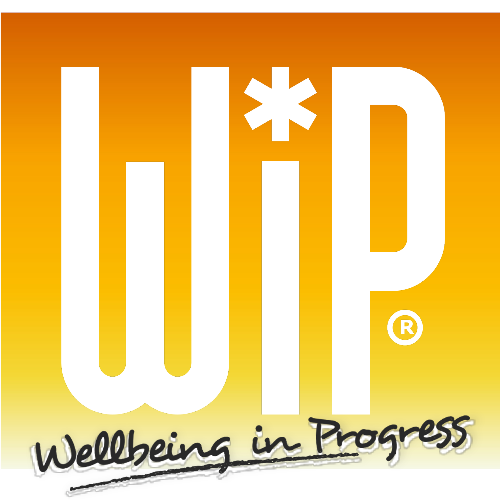About NWC 2024: HYBRID EVENT
With the resounding success of the seven preceding nursing conferences, we are thrilled to extend a warm welcome to you for the "8th edition of Nursing World Conference" (NWC 2024). This event is scheduled for October 17-19, 2024, offering hybrid participation options in Baltimore, USA, and virtually. Our central theme for NWC 2024 is "Empowering Nurses: Innovations, Compassion, and Excellence in Patient Care"
This Hybrid mode allows you to participate either in-person in Baltimore, MD, USA, or Virtually from your home or workplace.
Nursing is a dynamic field that continually evolves, and the outstanding achievements of our past conferences have paved the way for this extraordinary gathering. Innovations such as enhancing outpatient care, recognizing ethnic accomplishments, improving patient health and experiences, and expanding nurses' data analysis skills to tackle new challenges have been at the forefront of our previous successful editions. Recent imaginative ideas and intelligence have propelled various industries to develop modern technical systems and software within the healthcare sector. NWC 2024 builds on this success, promising to showcase a diverse range of perspectives and the latest advancements in the field of nursing.
Esteemed speakers, researchers, scientists, educators, nurses, healthcare professionals, midwives, clinicians, and industry leaders from around the world will once again converge to share their groundbreaking research. The resounding success of our previous conferences has solidified our reputation as a global platform for driving progress in nursing practice, education, and management. This event has consistently provided a unique opportunity for building connections with nursing colleagues, scholars, researchers, and clinical practitioners. The outstanding research presented has driven progress in enhancing the quality and safety of patient care and the effectiveness of healthcare delivery on a global scale. The event continues to be an invaluable opportunity for all nursing professionals to gain insights into the latest trends in nursing practice worldwide. The program includes keynote presentations, oral sessions, poster displays, workshops, and networking events spanning three days.
This event, building on the success of previous editions, aspires to fill the gap left by current global academic and scientific endeavors in response to numerous worldwide concerns. We invite you to engage in discussions on the most recent scientific findings, connect with peers, share your expertise, and equip yourself with the latest information to advance your field and career. Your attendance at NWC 2024 will undoubtedly prove beneficial, continuing the legacy of success established by our past conferences.
Upcoming Conferences: Nursing Conferences 2024 | Nursing World Conference | Nursing Conferences | Nursing Conference | Nursing Conference 2024 | Nursing Congress
Scientific Sessions
Committee Members

Adele Webb
Strategic Education, Inc., United States
Ilene Gottlieb
Vibrational Healing From The Heart, Inc., United States
Daryle Wane
Pasco-Hernando State College, United StatesSIGN UP FOR UPDATES
Get news, updates, and more from the Conference.
Quick Links
Speakers

Abigail Mitchell
D’Youville University, United States
Shannon McCrory Churchill
D’Youville University, United States
Yvonne M Smith
Baldwin Wallace University, United States
Christine Kuchenrither
Baldwin Wallace University, United States
Kennetia Brooks
Brooks Leadership, United States
Jeffrey Hammond
New York Presbyterian Hospital, United States
Alicia Hernandez Punsalan
University of San Diego, United States
Brian Ace Mones
Houston Methodist Hospital, United States
Chris Lengle
Author of “The Male Nurse Survival Guide”, United States
Grayson Griggs
Western Carolina University, United States
Jennifer Fritz
University of Tennessee Medical Center, United States
Terri Majcan
Allegheny Health Network Wexford Hospital, United States
Amy Barnes
Western Carolina University, School of Nursing, United States
Katy Bartlett
Baylor Louise Herrington School of Nursing, United States
Brilee Jessop
Baylor University, United States
Elif Isik
Texas Woman's University, United States
Sofica C Bistriceanu
Academic Medical Unit - CMI, Romania
Dan Willis
FirstResponderWellness.com, United StatesPast Conference Information
7th edition of Nursing World Conference (NWC 2023) took place from October 16 to 18, 2023, in a hybrid format. NWC 2023 has received an overwhelming response from participants.
Magnus Group would like to extend its heartfelt gratitude to all the Organizing Committee Members, Chairs and Co-chairs, Exhibitors, Speakers, and Media Partners whose invaluable contributions played a pivotal role in making NWC 2023 a resounding success.
NWC 2023 served as an excellent platform for the exchange of ideas and the discussion of the latest innovations in the field of nursing. Keynote Sessions, followed by Workshops, Oral Presentations and Poster Presentations, with speakers hailing from various universities, hospitals, academia, and the business sector shared their recent research activities, enriching the conference with their insights and expertise.
For NWC 2023 Final Program: Click Here
For NWC 2023 Abstract Book: Click Here
For NWC 2023 Gallery: Click Here
Here is a list of our esteemed speakers who graced NWC 2023 with their knowledge and experience.
NWC 2023 Keynote Presenters:
|
Adele Webb |
Capella University |
United States |
|
Daryle Wane |
Pasco-Hernando State College, Florida |
United States |
|
Ilene Gottlieb |
Vibrational Healing From The Heart, Inc. |
United States |
|
Nina Beaman |
Aspen University |
United States |
|
Julia Bietsch |
CVS Health |
United States |
|
Lisa Foertsch |
University of Pittsburgh School of Nursing |
United States |
|
Elaine Patricia Webb |
Houston Methodist Willowbrook Hospital |
United States |
|
Lisa Wallace |
Morehead State University |
United States |
|
Robin Adams Geiger |
Ingenovis Health |
United States |
|
Tammy P. Aiken |
Bassett Healthcare Network |
United States |
|
Mary Fran Oskvarek |
Northwestern Medicine Central DuPage Hospital |
United States |
|
Jennifer Anthony |
Rasmussen University |
United States |
|
Irene Auteri |
Adelphi University College of Nursing and Public Health |
United States |
|
Jennifer Ferguson |
MidAmerica Nazarene University |
United States |
|
Michele Lucille Lopez |
Pace University |
United States |
|
Sofica C. Bistriceanu |
Academic Medical Unit – CMI |
Romania |
Upcoming Nursing Conferences 2024: Nursing World Conference | Nursing Conferences | Nursing Conference | Nursing Conference 2024 | Nursing Congress | Nursing Conferences in Boston | Nursing World Conference 2024 | Nursing Events | Nursing World Congress 2024 | Nursing Conferences | Global Conference on Nursing 2024 | International Conference on Nursing | Nursing World Congress | Nursing World Events | Nursing Meetings 2024 | Nursing Conference | Nursing Conference 2024 | Nursing Meeting
NWC 2023 Speakers:
|
Linda Coventry |
Edith Cowan University |
Australia |
|
Robert Thorn |
Thaxton Leadership |
United States |
|
Sara Bastin |
Boston Medical Center |
United States |
|
Jacqueline McKendry |
Boston Medical Center |
United States |
|
Susan Ferguson |
The University of Texas MD Anderson Cancer Center |
United States |
|
Toby Noel L Carver |
Charles George Department of Veterans Affairs Medical Center |
United States |
|
Elly O’Greysik |
HiMARC, University of Alberta |
Canada |
|
Anandhi Deva Amirtharaj |
Sultan Qaboos University |
Sultanate of Oman |
|
Sonia Valdez |
National Healthcare & Housing Advisors (NHHA) |
United States |
|
Diane Vines |
California State University San Bernardino |
United States |
|
Sarah Harrington |
California State University San Bernardino |
United States |
|
Geoffrey Cui |
California State University San Bernardino |
United States |
|
James Montegrico |
School of Nursing, University of North Carolina at Charlotte |
United States |
|
Sadie Elisseou |
Harvard Medical School; Boston University School of Medicine |
United States |
|
Nicole Farnsworth |
University of Maryland Baltimore Washington Medical Center |
United States |
|
Maysoun Hussein Ali Atoum |
The Hashemite University |
Jordan |
|
Jill Johnson |
Utah Valley University |
United States |
|
Stephanie Dunn |
Utah Valley University |
United States |
|
Halie Hansen |
Utah Valley University |
United States |
|
Immaculate Ndango Nyonka |
Netcare N1 City Hospital |
South Africa |
|
Federica Canzan |
University of Verona |
Italy |
|
Elisa Ambrosi |
University of Verona |
Italy |
|
Jaime Van Allen |
University of Maryland Baltimore Washington Medical Center |
United States |
|
Elizabeth Itote |
Inova Fairfax Medical Campus |
United States |
|
Nguyen Tom Griggs |
Owner, Lead Connect Grow LLC |
United States |
|
Marina Gharibian Adra |
American University of Beirut |
Lebanon |
|
Rosemary O’Dell |
Children’s Hospital Colorado |
United States |
|
Karen Regan |
Children’s Hospital Colorado |
United States |
|
Sharonda Middlebrooks Brown |
Ex Consultants LLC |
United States |
|
Lee Caiger |
University of Chester |
United Kingdom |
|
Kate H. Knight |
University of Chester |
United Kingdom |
|
Louise Kelly |
Tallaght University Hospital |
Ireland |
|
Claire Noonan |
Age related Health care, Tallaght University Hospital |
Ireland |
|
Nayomi Walton |
University of Hartford |
United States |
|
Stacey Frawley |
Stony Brook University |
United States |
|
Tamika Rhodes |
The University of Oklahoma Fran and Earl Ziegler College of Nursing |
United States |
|
Katy Fisher-Cunningham |
The University of Oklahoma Fran and Earl Ziegler College of Nursing |
United States |
|
Makpal Akhmetova |
Nazarbayev University School of Medicine |
Kazakhstan |
|
Rannibel Atsimbom |
Cameroon Nurses Association/Biaka University Institute of Buea |
Cameroon |
|
Hawazen Rashed Albalawi |
King Faisal Specialist Hospital and Research Center |
Saudi Arabia |
|
Kristen Erekson |
Brigham Young University |
United States |
|
Sarah Spendlove Caswell |
Brigham Young University |
United States |
|
Janice Nissen |
Accreditation Council for Medical Affairs - doubt |
United States |
|
Ruolan Ge |
Peking University Shenzhen Hospital |
China |
|
Brittany Nicole Hudgins-Graham |
Western Carolina University |
United States |
|
Si Yee Liew |
SL Consulting Ltd. |
Canada |
|
Kimberly Minich |
Saint Mary's College |
United States |
|
Xiao Yang |
School of Nursing, Sun Yat-Sen University |
China |
|
Rong-rong Han |
School of Nursing, Sun Yat-Sen University |
China |
|
Kara K. De La Fosse |
Minnesota State University, Mankato |
United States |
|
Rachel Schickling |
Minnesota State University, Mankato |
United States |
|
Yushen Dai |
School of Nursing, Sun Yat-sen University |
China |
|
Xiaomin Zhang |
School of Nursing, Sun Yat-sen University |
China |
|
Michele Lucille Lopez |
Pace University |
United States |
|
Jie Zheng |
School of Nursing, Peking University |
China |
|
Robin Whelpley |
Bon Secours Memorial College of Nursing |
United States |
|
Cariska Swanepoel |
Mediclinic Durbanville |
South Africa |
|
Mary Anbarasi Johnson |
Christian Medical College, Vellore |
India |
|
Eta nee Enow Vivian Ayamba |
University of Buea, Cameroon |
Cameroon |
|
Elizabeth Coleman |
Minnesota State University, Mankato |
United States |
|
Katherine Martin |
Augsburg University |
United States |
|
Alvaro Jimenez |
Augsburg University |
United States |
|
Yang Chen |
School of Nursing and Health, Zhengzhou University |
China |
|
Saliha Koc Aslan |
Acibadem Healthcare Group |
Turkey |
|
Paraskevi Theofilou |
Hellenic Open University, School of Social Sciences |
Greece |
|
Xiaodan Li |
Peking University People's Hospital |
China |
|
Joy A. Bliss |
School of Nursing, Hawaii Pacific University |
United States |
|
Lacy Razor |
School of Nursing, Hawaii Pacific University |
United States |
|
Jennifer Huerta Bandy |
School of Nursing, Hawaii Pacific University |
United States |
|
Natalie Robinson Bruner |
GladED Leadership Solutions |
United States |
|
Diane Yeo |
Diane Yeo Mindfulness |
Canada |
|
Franz Porzsolt |
Institute of Clinical Economics |
Germany |
|
Nikki Davenport |
University of North Alabama |
United States |
|
Kemeng Ji |
School of Nursing, Fudan University |
China |
|
Yongyong Yuan |
Ruijin Hospital, Shanghai Jiao Tong University School of Medicine |
China |
|
Nancy Armstrong |
Murray State University |
United States |
|
Aisha Faisal Basheer |
Maternity and child hospital |
Saudi Arabia |
|
Wejdan Sulaiman Alharbi |
Tabuk health cluster |
Saudi Arabia |
|
DeLeon Addison |
Tarrant County College |
United States |
|
Ballambattu Vishnu Bhat |
AarupadaiVeedu Medical College & Hospital, Pondicherry |
India |
|
Maria Adelaide Silva Paredes Moreira |
Federal University of Paraiba – PMPG - UFPB |
Brazil |
|
Kafilat Kelani |
Cleveland Clinic |
United States |
|
Meaza Getahun Sileshi |
Mijona Education, Nordic Medical Center |
Ethiopia |
|
Danielle Beasley |
Excelsior University, School of Nursing |
United States |
|
Xuelin Zhang |
School of Nursing, The Hong Kong Polytechnic University |
China |
|
Federica Vallone |
University of Naples Federico II |
Italy |
|
Mohammad Mehdi Shirmohamadi |
WFI (Waterloo Filtration Institute) ambassador |
Iran |
|
Atefeh Khosravi |
R&D Manager |
Iran |
|
J. Michael O’Bryan |
Greiner Bio-One North America, Inc. |
United States |
|
Matt Broadway-Horner |
Te Toka Tumai |
New Zealand |
|
Meera Radha Mistry |
University of Southern California |
United States |
NWC 2023 Workshop:
|
Nguyen Tom Griggs |
Owner, Lead Connect Grow LLC |
United States |
NWC 2023 Poster Presenters:
|
Camron Young |
Atrium Health Cabarrus |
United States |
|
Liz Reeck |
Atrium Health Cabarrus |
United States |
|
Taylor Hagadorn |
Atrium Health Cabarrus |
United States |
|
Kristyn Melsenti |
Yale New Haven Hospital |
United States |
|
Doreen A. Callaghan |
Massasoit Community College |
United States |
|
Cheryl Munroe |
Hamilton Health Sciences |
Canada |
|
Elanne A Bueno |
Regis College |
United States |
|
Kristen Edmunds |
Atrium Health Behavioral Health Center |
United States |
|
Nicholas Archer |
Atrium Health Behavioral Health Center |
United States |
|
Michelle Olshan-Perlmutter |
Atrium Health Behavioral Health Center |
United States |
|
Jensen L. Mattar |
New England Baptist Hospital |
United States |
|
Sonia Mendez |
North York General Hospital |
Canada |
|
Komal Patel |
North York General Hospital |
Canada |
|
Patrice D’ Amato/Patricia Rogers |
Independent author/nurse educator |
United States |
|
Parker Sparks |
University of Southern California |
United States |
|
Rose LaPlante |
Boston College |
United States |
|
Rita Fernandes |
Santa Maria Health School |
Portugal |
|
Lisa Logan |
Spalding University |
United States |
|
Chunqin Liu |
School of Nursing, Guangzhou Medical University |
China |
|
Opal Dy |
Arrowhead Regional Medical Center |
United States |
|
Claudia Saenz Hourigan |
Texas A & M University-Corpus Christi College of Nursing and Health Sciences |
United States |
|
Tawni Mincks |
Washington State Community College Department of Nursing - Marietta, Ohio |
United States |
|
Lijuan Zhang |
Ruijin Hospital, Shanghai Jiao Tong University School of Medicine |
China |
|
Faith Atte |
William Paterson University of New Jersey |
United States |
|
Budour Alotaibi |
Prince Sultan Military Medical City, Riyadh |
Saudi Arabia |
|
Priya Hippolyte |
Regis College |
United States |
|
Chen-Yuan Hsu |
Da-Yeh University |
Taiwan |
|
Sarah J. Shareef |
Michigan State University College of Human Medicine |
United States |
|
Yu-Huei Su |
National Tsing Hua University, Department of Music |
United States |
|
Sumin Kwun |
Yonsei university |
Korea, Republic of |
|
Ying Cai |
Chongqing Medical University |
China |
|
Francis Matovu |
UVRI-IAVI HIV vaccine program Ltd. |
Uganda |
Upcoming Nursing Conferences 2024: Nursing World Conference | Nursing Conferences | Nursing Conference | Nursing Conference 2024 | Nursing Congress | Nursing Conferences in Boston | Nursing World Conference 2024 | Nursing Events | Nursing World Congress 2024 | Nursing Conferences | Global Conference on Nursing 2024 | International Conference on Nursing | Nursing World Congress | Nursing World Events | Nursing Meetings 2024 | Nursing Conference | Nursing Conference 2024 | Nursing Meeting
We would like to thank all the session chairs, speakers, moderators, exhibitors, students and delegates for attending the conference and making it a grand success.
With the Successful Completion of NWC 2023 as a Hybrid Event, we take the pleasure to announce "8th edition of Nursing World Conference" (NWC 2024) at Baltimore, USA during October 17-19, 2024.
We hope to see you again at NWC 2024!!!
Upcoming Healthcare Conferences
Conference Name: 4th Edition of Singapore Nursing Research Conference
Dates: March 21-23, 2024
Venue: Singapore
Conference Name: 8th Edition of Nursing World Conference
Dates: October 17-19, 2024
Venue: Baltimore, MD, USA
Conference Name: 3rd Edition of International Public Health Conference
Dates: March 21-23, 2024
Venue: Singapore
Upcoming Medical Conferences
Conference Name: 7th Edition of International Cancer Conference
Dates: October 17-19, 2024
Venue: Baltimore, MD, USA
Conference Name: 4th Edition of International Conference on Tissue Engineering and Regenerative Medicine
Dates: September 2-4, 2024
Venue: Madrid, Spain
Conference Name: 6th Edition of Euro-Global Conference on Pediatrics and Neonatology
Dates: September 2-4, 2024
Venue: Madrid, Spain
Conference Name: 5th Edition of Global Conference on Surgery and Anaesthesia
Dates: September 5-7, 2024
Venue: Madrid, Spain
Conference Name: 2nd Edition of Global Conference on Gynecology & Womens Health
Dates: October 17-19
Venue: Baltimore, MD, USA
Conference Name: 4th Edition of World Obesity and Weight Management Congress
Dates: October 24-26, 2024
Venue: Baltimore, MD, USA
Upcoming Cardiology Conferences
Conference Name: 2nd Edition of International Heart Congress
Dates: June 20-22, 2024
Venue: Paris, France
Conference Name: 5th Edition of Cardiology World Conference
Dates: September 5-7, 2024
Venue: Madrid, Spain
Upcoming Gastro Conferences
Conference Name: 2nd Edition of International Conference on Gastroenterology
Dates: October 21-23, 2024
Venue: Baltimore, MD, USA
Upcoming Infection Conferences
Conference Name: 6th Edition of World Congress on Infectious Diseases
Dates: June 24-26, 2024
Venue: Paris, France
Conference Name: 7th Edition of World Congress on Infectious Disease
Dates: October 24-26, 2024
Venue: Baltimore, MD, USA
Upcoming Physical Medicine Conferences
Conference Name: 2nd Edition of Global Conference on Physical Medicine and Rehabilitation
Dates: September 9-11, 2024
Venue: Madrid, Spain
Upcoming Orthopedics Conferences
Conference Name: 2nd World Orthopedics Conference
Dates: September 9-11, 2024
Venue: Madrid, Spain
Upcoming Neurology Conferences
Conference Name: 9th Edition of International Conference on Neurology and Neurological Disorders
Dates: June 20-22, 2024
Venue: Paris, France
Conference Name: 10th Edition of International Conference on Neurology and Brain Disorders
Dates: October 21-23, 2024
Venue: Baltimore, MD, USA
Upcoming Addiction Conferences
Conference Name: 5th Edition of Global Conference on Addiction Medicine, Behavioral Health and Psychiatry
Dates: October 21-23, 2024
Venue: Baltimore, MD, USA
Upcoming Vaccines Conferences
Conference Name: 4th Edition of International Vaccines Congress
Dates: October 24-26, 2024
Venue: Baltimore, MD, USA
Upcoming Dental Conferences
Conference Name: 8th Edition of International Conference on Dentistry and Oral Health
Dates: March 25-27, 2024, 2024
Venue: Singapore
Conference Name: 9th Edition of International Conference on Dentistry and Oral Health
Dates: September 2-4, 2024
Venue: Madrid, Spain
For Magnus Group Conferences Reviews:
Magnus Group Nursing Conferences Reviews | Magnus Conferences Reviews
Upcoming Nursing Conferences
|
March 24-26, 2025 |
||
|
October 17-19, 2024 |
6th edition of Nursing World Conference was organized during October 27-29, 2022 in Hybrid Format. NWC 2022 has received great response from the participants.
Magnus Group takes immense pleasure to thank all the Organizing Committee Members, Chairs and Co-chairs, Speakers, Students, and Media Partners who has contributed to the success of NWC 2022.
NWC 2022 has provided a great platform to discuss the latest innovations in the Nursing. Keynote Sessions followed by Oral Presentations and Poster Presentations were initiated which included Speakers from various Universities, Hospitals, Academics and Business who shared their recent research activities.
For NWC 2022 Final Program: Click Here
For NWC 2022 Abstract Book: Click Here
For NWC 2022 Gallery: Click Here
And here is the list of our speakers.
NWC 2022 Keynote Presenters:
|
Robin Adams Geiger |
Ovita Health |
United States |
|
Priscilla E. Neils |
Healthtrust |
United States |
|
Ilene Gottlieb |
Vibrational Healing From The Heart, Inc. |
United States |
|
Carlos A. Archilla-Cady |
Nemours Children’s Hospital |
United States |
|
Daryle Wane |
Pasco-Hernando State College |
United States |
|
Marian Heemskerk |
Director of Community Life |
Canada |
|
Sofica Bistriceanu |
Academic Medical Unit – CMI |
Romania |
Upcoming Nursing Conferences 2024: Nursing World Conference | Nursing Conferences | Nursing Conference | Nursing Conference 2024 | Nursing Congress | Nursing Conferences in Boston | Nursing World Conference 2024 | Nursing Events | Nursing World Congress 2024 | Nursing Conferences | Global Conference on Nursing 2024 | International Conference on Nursing | Nursing World Congress | Nursing World Events | Nursing Meetings 2024 | Nursing Conference | Nursing Conference 2024 | Nursing Meeting
NWC 2022 Speakers:
|
Jodi Noga Colorado |
Colorado Mesa University |
United States |
|
Cristina M Bravo |
Baptist Health South Florida |
United States |
|
Terri W. Enslein |
Xavier University |
United States |
|
Kelly Conway |
Rocky Mountain University of Health Professions |
United States |
|
Olga C. Rodriguez |
Florida Southern College |
United States |
|
Mahkameh Rasouli |
University of California Irvine |
United States |
|
Shannon McCrory-Churchill |
Dyouville University |
United States |
|
Abigail Mitchell |
Dyouville University |
United States |
|
Eilean Lazarus Rathinasamy |
Sultan Qaboos University |
Oman |
|
Denise Fleming-Weiler |
Montana State UniversityBozeman |
United States |
|
Brenda Wiles |
Xavier University |
United States |
|
Emilie Burdette |
Xavier University |
United States |
|
Noushin Vastani |
Brenau University |
United States |
|
Jean Ross |
Otago Polytechnic |
New Zealand |
|
Katelyn Erickson |
Roseburg VA Health Care System |
United States |
|
Sandra Walker-Halliman |
Columbia VA Healthcare System |
United States |
|
Hsiu-Chin Chen |
Utah Valley University |
United States |
|
Vera Costa |
Monash University |
Australia |
|
Barry Wiener |
Lyndon B. Johnson Hospital |
United States |
|
Marta Figueroa |
NYU Langone Health |
United States |
|
Somya Ramrakhyani |
Healing Breaths Art of Living Foundation |
United States |
|
Toni Hawkins |
Inova Fairfax Medical Campus |
United States |
|
Sandy Lamb |
Altitude Business Coaching |
United States |
|
Sarah Waylett |
Dreamgarten |
United States |
|
Donna Ho-Shing |
New Jersey City University |
United States |
|
Alba Idaly Munoz |
National University of Colombia |
Colombia |
|
Michael O’Bryan |
Greiner Bio-One |
United States |
|
Cinzia Caparso |
University of Michigan |
United States |
|
Lisa Wallace |
Morehead State University |
United States |
|
Jane Png Hong Hock |
Singapore General Hospital |
Singapore |
|
Erica Colvin |
Allina Health |
United States |
|
Heather Marker |
Mayo Clinic |
United States |
|
Lisa Y. Foertsch |
University of Pittsburgh |
United States |
|
Misti Schneidewind |
Johns Hopkins University School of Nursing |
United States |
|
Jennifer Nanna |
Current Health |
United States |
|
Camilita Rahat-Goberdhan |
New York Presbyterian HospitalWeill Cornell |
United States |
|
Jill Bennison |
Nationwide Children's Hospital |
United States |
|
Elaine Webb |
Houston Methodist Willowbrook Hospital |
United States |
|
Amy Richards |
Rogers State University |
United States |
|
Shanti Nair |
Tata Memorial Hospital |
India |
|
Naser Alotaibi |
Kuwait University |
Kuwait |
|
Agnes Makhene |
University of Johannesburg |
South Africa |
|
Panmial Priscilla Damulak |
Baze University |
Nigeria |
|
Si Qi Yoong |
National University of Singapore |
Singapore |
|
Ruolan Ge |
Peking University Shenzhen Hospital |
China |
|
Supattra Changsuphan |
Thammasat University |
Thailand |
|
Anila Cake |
University of Medicine |
Albania |
|
Jennifer Knox |
Woodward Academy |
United States |
|
Samirah Alamri |
King Abdullah Specialized Children Hospital National Guard(KASCH) |
Saudi Arabia |
|
Gloria Achempim-Ansong |
University of Ghana |
Ghana |
|
Precious Chibuike Chukwuere |
North West University |
South Africa |
|
Tom De Keyser |
University Hospital Ghent |
Belgium |
|
Rocio Garcia |
University Health |
United States |
|
Celeste Johnson |
Western Carolina University |
United States |
|
Tamberly j Matthews |
Northwestern Medicine Delnor Hospital |
United States |
|
Iyabode Aderonke Oniyide |
National open university of Nigeria |
Nigeria |
NWC 2022 Workshop:
|
Ian Green |
SNOMED International |
United Kingdom |
|
Jane Millar |
SNOMED International |
United Kingdom |
NWC 2022 Poster Presenters:
|
Annette Holst |
Genesis Medical Center |
United States |
|
Timothy Wallerich |
Mayo clinic Hospital |
United States |
|
J. James Montegrico |
University of North Carolina Charlotte |
United States |
|
Jessi D. Thompson |
Baylor University |
United States |
|
Breanna Walker |
Mayo Clinic |
United States |
|
Ann Ell |
New England Baptist Hospital |
United States |
|
Shannon Traft |
New England Baptist Hospital |
United States |
|
Deidra Frisbie |
Southern Illinois UniversityEdwardsville |
United States |
|
Robin Simon |
Southern Illinois UniversityEdwardsville |
United States |
|
Elizabeth J Solomon |
Touro University Nevada |
United States |
|
Megan Schilling |
Angelo State University |
United States |
|
Aref Mishref Aref Alkhatib |
The Royal Hospital |
Jordan |
|
Angie Flynn |
Western Carolina University |
United States |
|
Faith Atte |
William Paterson University Of New Jersey |
United States |
|
Brittany Nicole Hudgins-Graham |
Western Carolina University |
United States |
|
Cheryl Smith Monfee |
Arkansas Tech University |
United States |
|
Andrea Green |
Ohio Health |
United States |
|
Victoria Ferguson |
Old Dominion University |
United States |
|
AnnMarie Vang |
Aspen University |
United States |
|
Rachel Phelps |
Samford University |
United States |
|
Crystal M. Burton |
Radford University |
United States |
|
Dylan Salrin |
UC Health |
United States |
|
Cecilia Kasperick |
UC San Diego Health |
United States |
|
Sally Clemenson |
Minnesota State University |
United States |
|
Mee Kyung Lee |
Merrimack College |
United States |
Upcoming Nursing Conferences 2024: Nursing World Conference | Nursing Conferences | Nursing Conference | Nursing Conference 2024 | Nursing Congress | Nursing Conferences in Boston | Nursing World Conference 2024 | Nursing Events | Nursing World Congress 2024 | Nursing Conferences | Global Conference on Nursing 2024 | International Conference on Nursing | Nursing World Congress | Nursing World Events | Nursing Meetings 2024 | Nursing Conference | Nursing Conference 2024 | Nursing Meeting
We would like to thank all the session chairs, speakers, moderators, exhibitors, students and delegates for attending the NWC 2022 conference and making it a grand success.
For Magnus Group Conferences Reviews:
Magnus Group Nursing Conferences Reviews | Magnus Conferences Reviews
5th edition of Nursing World Conference was organized as Online Event on October 18-20, 2021. NWC 2021 Congress has received generous response from participants.
Magnus Group takes its pleasure to thank all the Organizing Committee Members, Chairs and Co-chairs, Speakers, Students, Media Partners and all who supported the conference in every aspect for the magnificent success.
NWC 2021 being an international platform, this scientific meeting has laid the path for discussing the latest innovations in the Nursing. Followed by Keynote Session, Oral Presentations were initiated which included Speakers from various Universities, Hospitals, Academia and Business who shared their recent research activities.
For NWC 2021 Final Program: Click Here
For NWC 2021 Abstract Book: Click Here
And here is the list of our speakers.
NWC 2021 Keynote Speakers:
|
Adele Webb |
Capella University |
United States |
|
Natalia Cineas |
New York City Health + Hospitals Corp |
United States |
|
Daryle Wane |
Pasco-Hernando State College |
United States |
|
Donna M. White |
University of Massachusetts - Boston |
United States |
|
Callie Anne Bittner |
Colorado Center for Nursing Excellence |
United States |
|
Ilene Gottlieb |
Vibrational Healing From The Heart, Inc. |
United States |
|
Patrick Baker |
Palarum, LLC |
United States |
|
Petrova N G |
Saint Petersburg State Medical University |
Russia |
|
Sofica Bistriceanu |
Academic Medical Unit – CMI |
Romania |
Upcoming Nursing Conferences 2024: Nursing World Conference | Nursing Conferences | Nursing Conference | Nursing Conference 2024 | Nursing Congress | Nursing Conferences in Boston | Nursing World Conference 2024 | Nursing Events | Nursing World Congress 2024 | Nursing Conferences | Global Conference on Nursing 2024 | International Conference on Nursing | Nursing World Congress | Nursing World Events | Nursing Meetings 2024 | Nursing Conference | Nursing Conference 2024 | Nursing Meeting
NWC 2021 Speakers:
|
Mary Fanning |
WVU Medicine |
United States |
|
Dan C. Harris |
WVU Medicine |
United States |
|
Denise Stage McNulty |
Houston Methodist Hospital |
United States |
|
Faye A Fairchild |
Columbia College |
United States |
|
Rebecca Toothaker |
Bloomsburg University |
United States |
|
Pamela E Cook |
Bloomsburg University |
United States |
|
Mohammad Alkawaldeh |
University of Massachusetts Medical School |
United States |
|
Wong Sze Wing Julia |
Tung Wah College |
Hong Kong |
|
Joanne Smith-Young |
Memorial University of Newfoundland |
Canada |
|
Eileen Scarinci |
North Jersey Community Research Initative |
United States |
|
Rosemarie White |
Delaware State University |
United States |
|
Miranda Squire |
UCHealth |
United States |
|
Matthew Hickling |
Community Care Physicians - Siena College |
United States |
|
Christine Greenidge |
New York City H+H/Metropolitan |
United States |
|
Jessie (Jaspreet)Dhaliwal |
Pennsylvania State University |
United States |
|
Angela Lang & Christine Feierstein |
University of Wisconsin-Milwaukee |
United States |
|
Lori Rhodes |
Orthopedic Acute Care |
United States |
|
Patricia Love |
Florida Gateway College |
United States |
|
Xiaoyun Zhou |
The University of Queensland |
Australia |
|
Machiko Higuchi |
National College of Nursing |
Japan |
|
Brian Trzaskos |
Motivation Beyond Measure |
United States |
|
Ndango Immaculate Nyonka |
University of the Western Cape |
South Africa |
|
Lerato Matshaka |
University of Johannesburg |
South Africa |
|
Armiel Suriaga |
Florida Atlantic University |
United States |
|
Rui Zhao |
Children’s Hospital of Fudan University |
China |
|
Sue Roe |
The Roe Group Enterprises, llc |
United States |
|
Giuseppina Seppini |
S. Croce e Carle Hospital, Cuneo |
Italy |
|
Danielle Beasley |
The University of South Florida |
United States |
|
Navpreet |
Dayanand Medical College & Hospital Ludhiana |
India |
|
Anita Frauwallner |
Institut AllergoSan |
Austria |
|
Mark Hayford Dwira |
University of Nottingham |
United Kingdom |
|
Sherita House |
Indiana University School of Nursing |
United States |
|
Ashleigh Boyd |
Treat The Nurse |
United States |
|
Mary Franczek |
Notrhern Michigan University |
United States |
|
Dawnetta Marcum |
University of Pikeville |
United States |
|
Craig A Tobias |
Cleveland Clinic Foundation |
United States |
|
Natalie Cline |
Cleveland Clinic Foundation |
United States |
|
Etti Rosenberg |
Clalit health Organisation |
Israel |
|
Rebecca Pike |
King Faisal Specialist Hospital & Research Center |
Saudi Arabia |
NWC 2021 Poster Presenters:
|
Elizabeth Goldsby |
Ball State University |
United States |
|
Eunice Ojo |
Advent Health Tampa |
United States |
|
Melissa Viatori |
Duke Hospital |
United States |
|
Deborah H. Smith |
Marymount University |
United States |
|
Janet Gichau |
Kaiser Permanente Integrated System |
United States |
|
AnnMarie Vang |
Aspen University |
United States |
|
Kelly Hakanson |
Multicare Capital Medical Center |
United States |
|
Amy Rama |
Roberts Wesleyan College |
United States |
|
Judith Fruiterman |
Marymount University |
United States |
|
Laura Duran |
UT Southwestern Medical Center Dallas |
United States |
|
Deborah Smith |
Brazosport College |
United States |
|
Hye-Young Jang |
Hanyang University |
Korea Republic of |
|
Keiko Hattori |
Nihon Institute of Medical Science |
Japan |
|
Mohammad Alkawaldeh |
University of Massachusetts Medical School |
United States |
|
Alaina Valcourt |
Dothouse Health |
United States |
|
Linda Stopsky |
Northwell Health |
United States |
|
Nicole Giancaterino |
Chamberlain College of Nursing |
United States |
|
Lynn Doyle |
Laboure' College |
United States |
Upcoming Nursing Conferences 2024: Nursing World Conference | Nursing Conferences | Nursing Conference | Nursing Conference 2024 | Nursing Congress | Nursing Conferences in Boston | Nursing World Conference 2024 | Nursing Events | Nursing World Congress 2024 | Nursing Conferences | Global Conference on Nursing 2024 | International Conference on Nursing | Nursing World Congress | Nursing World Events | Nursing Meetings 2024 | Nursing Conference | Nursing Conference 2024 | Nursing Meeting
We would like to thank all the speakers, session chairs, moderators, exhibitors, students and delegates for attending and making NWC 2021 a huge success.
For Magnus Group Conferences Reviews:
Magnus Group Nursing Conferences Reviews | Magnus Conferences Reviews
4th edition of Nursing World Conference (NWC 2019) hosted by Magnus Group during August 19-21, 2019 at London, UK with a theme “In Pursuit of Viable Quality Health Care”, was a great success with eminent Keynote Speakers, Speakers, Delegates and Students from various reputed institutions to share their expertise and research work.
For NWC 2019 Final Program: Click Here
For NWC 2019 Abstract Book: Click Here
For NWC 2019 Gallery: Click Here
NWC 2019 was held with 10+ Keynote Lectures, 100+Speakers, Poster Sessions, workshops and exhibitors.
Conference Topics included various sessions on: Nursing Research | Clinical Nursing | Nursing Informatics | Public Health Nursing | Cardiac Nursing | Anesthesia and PeriAnesthesia Nursing | Emergency/Ambulatory Care | Pediatric Nursing | Palliative Care Nursing | Geriatric Nursing | Holistic Nursing | Nursing Education | Psychiatric and Mental Health Nursing | Community Nursing | Gynecology and Obstetrics Nursing | Evidence-Based Nursing | Clinical Nursing | Oncology Nursing | Patient Centered Care | Midwifery and Women’s Health
NWC 2019 Keynote Speakers:
|
Gabriel Oluwakotanmi |
Hallmark University |
United States |
|
Adele A Webb |
Capella University |
United States |
|
Beth Ann Hackett |
Midstate Radiology Associates |
United States |
|
Veronique Haberey Knuessi |
University of Applied Sciences and Arts Western Switzerland |
Switzerland |
|
Charles Boicey |
Stony Brook University |
United States |
|
Nina Beaman |
Aspen University |
United States |
|
Vanessa Heaslip |
Bournemouth University |
United Kingdom |
|
Shuhong Luo |
SUNY Upstate Medical University |
United States |
|
Louise Bradley |
Mental Health Commission of Canada |
Canada |
|
Patricia A. Seabrooks |
Miami Regional University |
United States |
|
Malliga Jambulingam |
Morgan State University |
United States |
Upcoming Nursing Conferences 2024: Nursing World Conference | Nursing Conferences | Nursing Conference | Nursing Conference 2024 | Nursing Congress | Nursing Conferences in Boston | Nursing World Conference 2024 | Nursing Events | Nursing World Congress 2024 | Nursing Conferences | Global Conference on Nursing 2024 | International Conference on Nursing | Nursing World Congress | Nursing World Events | Nursing Meetings 2024 | Nursing Conference | Nursing Conference 2024 | Nursing Meeting
NWC 2019 Speakers:
|
Agusta Palsdottir |
University of Iceland |
Iceland |
|
Ruechuta Molek |
Chulabhorn Hospital |
Thailand |
|
Kamolchanok Boonprajak |
Chulabhorn Hospital |
Thailand |
|
Rattanaporn Nanthong |
Chulabhorn Hospital |
Thailand |
|
Dararat Chuwongin |
Chulabhorn Hospital |
Thailand |
|
Savitree Suratako |
Chulabhorn Hospital |
Thailand |
|
Renee Bauer |
Indiana State University |
United States |
|
Patcha Hortrakul |
Siriraj Hospital, Mahidol University |
Thailand |
|
Sudta Parakkamodom |
Siriraj Hospital, Mahidol University |
Thailand |
|
Napatchanan Laotaweesuk |
Siriraj Hospital, Mahidol University |
Thailand |
|
Kornnika Yangan |
Siriraj Hospital, Mahidol University |
Thailand |
|
Pattharaporn Sombood |
Siriraj Hospital, Mahidol University |
Thailand |
|
Ladda Permpolprasert |
Siriraj Hospital, Mahidol University |
Thailand |
|
Napat Thikom |
Siriraj Hospital, Mahidol University |
Thailand |
|
Natalia Cineas |
Mount Sinai St. Luke's |
United States |
|
Angela Cruz |
West Texas Veteran Affairs Healthcare System |
United States |
|
Maria Brennan |
Lourdes Health System |
United States |
|
Kwaunpanomporn Thummathai |
Chiang Mai University |
Thailand |
|
Laura Sweatt |
Methodist Mansfield Medical Center |
United States |
|
Nukhet Kirag |
Aydin Adnan Menderes University |
Turkey |
|
Ruifang Zhu |
Shanxi Medical University |
China |
|
Susan J Halbritter |
Sanford Hematololgy and Oncology |
United States |
|
Margaret Peggy Moriarty Litz |
Southern New Hampshire University |
United States |
|
Silje Gustafsson |
Lulea university of technology |
Sweden |
|
Maxine Holt |
Manchester Metropolitan University |
United Kingdom |
|
Kathy M Green |
Veterans Affairs |
United States |
|
Carlos A. Archilla |
Nemours Children’s Hospital |
United States |
|
Nwoke Otah Ngozi |
Abia State Nursing Council of Nigeria |
Nigeria |
|
Angela Cristina Yanez Corrales |
Pontifical Catholic University of Ecuador |
Ecuador |
|
Denise Rhew |
Cone Health |
United States |
|
Jason Upham |
Cone Health |
United States |
|
Brenda Spear |
Chamberlain University |
United States |
|
Anny Dionne |
Miami Regional College/Aspen University |
United States |
|
Ana Belen Salamanca Castro |
12 de Octubre University Hospital |
Spain |
|
Tracey Wilson |
University of Maryland |
United States |
|
Joanne Mee Wah Loo |
Mount Sinai West hospital |
United States |
|
Irena Nosal |
Wolfson Medical Center |
Israel |
|
Irena Laska |
Albanian Order of Nurses |
Albania |
|
Blerina Duka |
Albanian Order of Nurses |
Albania |
|
Carmen Herbel Spears |
Independence University |
United States |
|
Elvessa Narvasa |
Canadian Council of Cardiovascular Nurses Montreal |
Canada |
|
Ratchanee Sukanthachalathon |
Mahidol University |
Thailand |
|
Aretuza Cruz Vieira |
Albert Einstein Hospital |
Brazil |
|
Regina Callion |
ReMar Review |
United States |
|
Rosa Leda Bellini |
Notre Dame Intermedica Group |
Brazil |
|
Gebhard Mathis |
Praxis Internal Medicine |
Austria |
|
Mohammod Monirul Islam |
National Institute of Fitness and Sports in Kanoya |
Japan |
|
Julia U. Ugorji |
Rasmussen College |
United States |
|
Barbara J. Holder |
Andrews Institute Surgery Center |
United States |
|
Sathiyalatha Sarathi |
Sree Balaji College of Nursing |
India |
|
Beverley Tann |
Shirley Ryan AbiltyLab |
United States |
|
Juliana Christina |
Flinders University |
Australia |
|
Anita Rush |
Wokingham Hospital |
United Kingdom |
|
Cherie L. Smith |
Cone Health |
United States |
|
Susanne Salmela |
Vaasa Central Hospital |
Finland |
|
Ying Chieh Liu |
Chang Gung Univeristy |
Taiwan |
|
Carla Moore Beckerle |
Esse Health Physician Group |
United States |
|
Dennis L. Hargis |
Valencia College |
United States |
|
Ellen L. Palmer |
University of Texas at Arlington College of Nursing & Health Innovation |
United States |
|
Jazzle Anne Magdaug |
MedPro International |
Philippines |
|
Mariana Genshaft |
Wolfson Medical Center |
Israel |
|
Sonja Cleary |
RMIT University |
Australia |
|
Haya Raz |
Jerusalem College of Tecnology |
Israel |
|
Tziyon Tzohar |
Shaare Zedek Medical Center |
Israel |
|
Ana Lucia Brantes |
ESEL Lisboa |
Portugal |
|
Emily Cannon |
Indiana State University |
United States |
|
Nagwa Elkateb |
National Cancer Institute, Cairo University |
Egypt |
|
Lauren Blackshaw |
Moorfields Eye Hospital |
United Kingdom |
|
Anna Jumatul Laely |
DR Kariadi General Hospital |
Indonesia |
|
Clare Dickinson |
Cancer Research uk/ The Christie NHS Foundation Trust |
United Kingdom |
|
Mofatiki Eva Manyedi |
North West University |
South Africa |
|
Maserapelo Gladys Serapelwane |
North West University |
South Africa |
|
Tripti Nanda |
Noble Hospital Pune |
India |
|
Afolakemi Olaleye |
Lagos University Teaching Hospital |
Nigeria |
|
Denise Rhew |
Cone Health |
United States |
|
Jason Upham |
Cone Health |
United States |
|
Akiko Hiyama |
Sapporo City University |
Japan |
|
Ching Wen Chiu |
Sijhih Cathay General Hospital |
Taiwan |
|
Wasana Lavin |
Mahidol University |
Thailand |
|
Ran Lee |
National Cancer Center |
Korea |
|
Su-Ju Lu |
National Taipei University of Education |
Taiwan |
|
Maria Isabel Lage |
Univeristy of Minho |
Portugal |
|
Maria Fatima Braga |
Univeristy of Minho |
Portugal |
|
Odete Araujo |
Univeristy of Minho |
Portugal |
|
Malliga Jambulingam |
Morgan State University |
United States |
|
Gabriel Oluwakotanmi |
Hallmark University |
United States |
|
Adele A Webb |
Capella University |
United States |
|
Beth Ann Hackett |
Midstate Radiology Associates |
United States |
|
Veronique Haberey Knuessi |
University of Applied Sciences and Arts Western Switzerland |
Switzerland |
|
Charles Boicey |
Stony Brook University |
United States |
|
Nina Beaman |
Aspen University |
United States |
|
Vanessa Heaslip |
Bournemouth University |
United Kingdom |
|
Shuhong Luo |
SUNY Upstate Medical University |
United States |
|
Louise Bradley |
Mental Health Commission of Canada |
Canada |
|
Patricia A. Seabrooks |
Miami Regional University |
United States |
|
Elizabeth I Obahiagbon |
USA |
United States |
|
Love Onyeador |
Kaiser Permanente |
United States |
|
Munia Shihawi |
Queen Mary University of London |
United Kingdom |
|
Anna Angena |
Riga Stradins University |
Latvia |
|
Rawan Mohammed Gashgari |
King Faisal Specialist Hospital and Research Center - Jeddah |
Saudi Arabia |
|
Rawan Atequllah Alsolami |
King Faisal Specialist Hospital and Research Center |
Saudi Arabia |
|
Naomi Saucedo-Tanouye |
Kaiser Hospital |
United States |
|
Nayana Desai |
Kaiser Permanente |
United States |
|
Shahad |
KFSH&RC |
Saudi Arabia |
|
Ahuva Spitz |
Sharee Zedek medical center |
Israel |
|
Mahmoud Galal Ahmed |
Dubai Hospital- Dubai Health Authority |
United Arab Emirates |
|
Dorothy Sanders Thompson |
VA North Texas Health Care System |
United States |
|
Mpoeetsi Makau |
Ministry of Health |
Lesotho |
|
Ekomaye Kikachukwu Sophia |
Cross River State Ministry of Health |
Nigeria |
|
Eze Miracle Chukwuebuka |
Cross River State Ministry of Health |
Nigeria |
|
Uloho Rita Elo |
Cross River State Ministry of Health |
Nigeria |
|
Claudette Coombs |
Miami Dade College |
United States |
|
Shirley Gbalee Seckey Fahnbulleh |
Liberian Nurses Association |
Liberia |
NWC 2019 Poster Presenters:
|
Akiko Hiyama |
Sapporo City University |
Japan |
|
Ching Wen Chiu |
Sijhih Cathay General Hospital |
Taiwan |
|
Wasana Lavin |
Mahidol University |
Thailand |
|
Ran Lee |
National Cancer Center |
Korea |
|
Denise Rhew |
Cone Health |
United States |
|
Jason Upham |
Cone Health |
United States |
|
Su-Ju Lu |
National Taipei University of Education |
Taiwan |
|
Maria Isabel Lage |
Univeristy of Minho |
Portugal |
|
Maria Fatima Braga |
Univeristy of Minho |
Portugal |
|
Odete Araujo |
Univeristy of Minho |
Portugal |
|
Ed Michael Carbonell |
Central London Community Healthcare NHS Trust |
United Kingdom |
|
Lisa Dalton |
University of Texas Southwestern Medical Center |
United States |
|
Meenaxi Shah |
Central London Community Healthcare NHS Trust |
United Kingdom |
Upcoming Nursing Conferences 2024: Nursing World Conference | Nursing Conferences | Nursing Conference | Nursing Conference 2024 | Nursing Congress | Nursing Conferences in Boston | Nursing World Conference 2024 | Nursing Events | Nursing World Congress 2024 | Nursing Conferences | Global Conference on Nursing 2024 | International Conference on Nursing | Nursing World Congress | Nursing World Events | Nursing Meetings 2024 | Nursing Conference | Nursing Conference 2024 | Nursing Meeting
We would like to thank all the speakers, session chairs, moderators, exhibitors, students and delegates for attending and making NWC 2019 a huge sucess.
For Magnus Group Conferences Reviews:
Magnus Group Nursing Conferences Reviews | Magnus Conferences Reviews
Magnus Group takes a great pride in announcing successful outcome of 3rd edition of Nursing World Conference (NWC 2018) which was held in Rome, Italy during September 17-19, 2018.
NWC 2018 is a unique Academy program to build communities of common interest in cutting-edge sciences. It is an assemblage of faculty and research professionals in the field of Nursing and Healthcare, where you will have a great opportunity to share ideas and knowledge as well as collaborate/network with other scientists.
For NWC 2018 Final Program: Click Here
For NWC 2018 Abstract Book: Click Here
For NWC 2018 Gallery: Click Here
Magnus Group is prerogative to thank the Organizing Committee Members, Keynote speakers; Chair and Co-chairs on engross the plenary sessions, workshops and special sessions in an expanded manner to make this conference an privileged Summit.
NWC 2018 Organizing Committee:
|
Carlos A Archilla |
Nemours Hospital |
United States |
|
Adele A Webb |
Capella University |
United States |
|
Gabriel Oluwakotanmi |
Hallmark University |
United States |
|
Maryann Alexander |
National Council of State Boards of Nursing |
United States |
|
Larry E Simmons |
National League for Nursing |
United States |
|
Laura Croan |
Belfast Health and Social Care Trust |
Ireland |
|
Jayne Donaldson |
University of Stirling |
United Kingdom |
|
Katie Boston-Leary |
Maryland Organization of Nurse Leaders |
United States |
|
Lenka Gutova |
Military University Hospital Prague |
Czech Republic |
|
Sandra Almeida |
Auckland District Health Board |
New Zealand |
|
Sabrina Grigolo |
ASLTO3 Piedmont Region |
Italy |
The Organizing Committee would like to thank the moderator Dixie D. Thompson, University of Utah, USA for his contribution which ensued in smooth functioning of the conference.
Upcoming Nursing Conferences 2024: Nursing World Conference | Nursing Conferences | Nursing Conference | Nursing Conference 2024 | Nursing Congress | Nursing Conferences in Boston | Nursing World Conference 2024 | Nursing Events | Nursing World Congress 2024 | Nursing Conferences | Global Conference on Nursing 2024 | International Conference on Nursing | Nursing World Congress | Nursing World Events | Nursing Meetings 2024 | Nursing Conference | Nursing Conference 2024 | Nursing Meeting
NWC 2018 Speakers:
|
Jeri Burr |
University of Utah |
United States |
|
Gretchen J. Summer-Gafford |
Kaiser Foundation Hospitals |
United States |
|
Virginia Pesata |
South University |
United States |
|
Amelia Nichols Alava |
UF Health |
United States |
|
Janet Catt |
Kings College Hospital |
United Kingdom |
|
Dixie D. Thompson |
University of Utah |
United States |
|
Pamela Morey |
Western Health Authority |
Canada |
|
Susan Peckford |
Western Health Authority |
Canada |
|
Mary L. Perrin |
City of Hope National Medical Center |
United States |
|
Christy Vickers |
Ohio University Zanesville |
United States |
|
Susan D. Dowell |
Ohio University Zanesville |
United States |
|
Sheryl K. House |
Ohio University Zanesville |
United States |
|
Barbara J. Holder |
Andrews Institute Ambulatory Surgery Center |
United States |
|
Natalia Cineas |
Mount Sinai St Luke’s |
United States |
|
Angela Cruz |
Kaplan University |
United States |
|
Marco Enrico Sguanci |
Polyclinic Hospital San Martino |
Italy |
|
Marie Cameron |
University of the Highlands and Islands |
United Kingdom |
|
Amy Dopson |
University of Surrey |
United Kingdom |
|
Gunvor Munch Hansen |
VIA University College |
Denmark |
|
Sheryl K. Housel |
Ohio University Zanesville |
United States |
|
Amanda. M. Whateley |
Rainbows Children and Young People’s Hospice |
United Kingdom |
|
Usha Daniel |
National Maternity Hospital |
Ireland |
|
Kirsten Nielsen |
VIA University College |
Denmark |
|
Jaya Kuruvilla |
P.D. Hinduja Hospital |
India |
|
Pura Julia Cruz-Oliver |
Universidad del Sagrado Corazón |
Puerto Rico |
|
Paola Gobbi |
Nurses Board of Milan |
Italy |
|
Nancy Adrianna Garofalo |
NorthShore University HealthSystem |
United States |
|
Maria Alice dos Santos Curado |
Higher School of Nursing of Lisbon |
Portugal |
|
Mpoeetsi Makau |
Ministry of Health |
Lesotho |
|
Selda MERT BO?A |
Kocaeli University |
Turkey |
|
Rosalynde Johnstone |
Betsi Cadwaladr University Health Board |
United Kingdom |
|
Jose Miguel Aguilera |
St Vincent’s Private Hospital |
Australia |
|
Kathleen Lehmann |
Liberty University |
United States |
|
Nichelle A. Mullins |
Charter Oak Health CenterInc. |
United States |
|
Julia U. Ugorji |
Rasmussen College Bloomington Minnesota |
United States |
|
Joanne Mee Wah Loo |
Mount Sinai West |
United States |
|
Renee Bauer |
Indiana State University |
United States |
|
Dean W Metz |
South Tyneside NHS Foundation Trust |
United Kingdom |
|
Lois Dugmore |
University of Nottingham |
United Kingdom |
|
Monika Vanhova |
University Military Hospital Prague |
Czech Republic |
|
Shaher H Hamaideh |
The Hashemite University |
Jordan |
|
Eva Manyedi |
North West University |
South Africa |
|
Agusta Palsdottir |
University of Iceland |
Iceland |
|
Charmaine Elizabeth Hassan |
Department of Health Northern Cape |
South Africa |
|
Angelina Alaina Sepeku |
Abbott Fund Tanzania |
United Republic of Tanzania |
|
Tracey Wilson |
University of Maryland Medical Center |
United States |
|
Kimberly Bowers |
University of Maryland Medical Center |
United States |
|
Elvessa Narvasa |
Canadian Council of Cardiovascular Nurses |
Canada |
|
Nazli Parast |
Community Diabetes Education Program of Ottawa |
Canada |
|
Deborah E Lang |
Johns Hopkins Bayview Medical Center |
United States |
|
Ana-Bela de Jesus Roldao Caetano |
Nursing School of Coimbra |
Portugal |
|
Ahmad A. Latif Abujaber |
Hamad Medical Corporation |
Qatar |
|
Bejoy Chacko |
Hamad Medical Corporation |
Qatar |
|
Julia Maria das Neves Carvalho |
Nursing School of Coimbra |
Portugal |
|
Abdulqadir J. Nashwan |
Hamad Medical Corporation |
Qatar |
|
Elif Bilsin |
Gaziantep University |
Turkey |
|
Surbrena Forbes-Pedican |
The Turks and Caicos Islands Hospital, |
Turks and Caicos Islands |
|
Gülfer DOAN PEKNCE |
Adnan Menderes University |
Turkey |
|
Annelize Vorster |
University of the Free State |
South Africa |
|
Teresa Santos Boya |
Medina del Campo Hospital |
Spain |
|
Betise MeryA lencar Sousa Macau Furtad |
University of Pernambuco |
Brazil |
|
Tiina Elina Lindholm |
Åbo Akademi University & The Hospital District of Helsinki & Uusimaa |
Finland |
|
Helena Martins |
Portuguese Catholic University |
Portugal |
|
Sanna Fabiola |
AOU Maggiore della Carita |
Italy |
NWC 2018 Workshops:
|
Paula Kennedy |
Liverpool John Moores University |
United Kingdom |
|
Brenda T. Spear |
Chamberlain University |
United States |
|
Barbara J. Holder |
Andrews Institute Ambulatory Surgery Center |
United States |
|
Abdulqadir J. Nashwan |
Hamad Medical Corporation |
Qatar |
NWC 2018 Poster Presenters:
|
Lina Mayorga |
Oncology Research + Education Consultants |
United States |
|
Patricia A. Keresztes |
Saint Mary’s College |
United States |
|
Rosaria Cappadona |
University of Ferrara |
Italy |
|
Beatrice Zucchi |
University of Ferrara |
Italy |
|
Jeanette Elise Huemer |
The Arctic University of Norway |
Norway |
|
Liss Trine Eriksen |
The Arctic University of Norway |
Norway |
|
Debra L. Wagner |
University of North Florida |
United States |
|
Stephpen Lawrence |
Coastal Anesthesia Associates |
United States |
|
Janice Melsom |
Flagler Hospital |
United States |
|
Rosa Leda Bellini |
IQG Heath Services Accreditation |
Brazil |
|
Ana Carla Parra Labigalini Restituti |
IQG Heath Services Accreditation |
Brazil |
|
Nancy Adrianna Garofalo |
NorthShore University HealthSystem |
United States |
|
Julia Maria das Neves Carvalho |
Nursing School of Coimbra |
Portugal |
|
Ana-Bela de Jesus Roldão Caetano |
Nursing School of Coimbra |
Portugal |
|
Barbra Pesata |
UF Health |
United States |
|
Montserrat Planes |
University of Girona |
Spain |
|
Maria Eugenia Gras |
University of Girona |
Spain |
|
Miriam Aparecida Barbosa Merighi |
University of Sao Paulo |
Brazil |
|
Soon-Rim Suh |
Kyungpook National University |
Republic of Korea |
|
Kiyoko Tokunaga |
Kyoto Koka Women’s University |
Japan |
|
Kayoko Hirano |
Takarazuka University |
Japan |
|
Kim Jeung-Im |
Soonchunhyang University |
Republic of Korea |
|
Deborah E Lang |
Johns Hopkins Bayview Medical Center |
United States |
|
Lizelle Bernhardt |
University of Leicester |
United Kingdom |
Upcoming Nursing Conferences 2024: Nursing World Conference | Nursing Conferences | Nursing Conference | Nursing Conference 2024 | Nursing Congress | Nursing Conferences in Boston | Nursing World Conference 2024 | Nursing Events | Nursing World Congress 2024 | Nursing Conferences | Global Conference on Nursing 2024 | International Conference on Nursing | Nursing World Congress | Nursing World Events | Nursing Meetings 2024 | Nursing Conference | Nursing Conference 2024 | Nursing Meeting
For Magnus Group Conferences Reviews:
Magnus Group Nursing Conferences Reviews | Magnus Conferences Reviews
Magnus Group takes a great pride in declaring the successful completion of “2nd edition of Nursing World Conference” (NWC 2017) which was held in Las Vegas, USA during October 16-18, 2017.
Nursing Conference 2017 witnessed an amalgamation of outstanding speakers who enlightened the crowd with their knowledge and confabulated on various new-fangled topics related to the field of Nursing and Healthcare. The extremely well-known conference hosted by Magnus Group was marked with the attendance of young and brilliant researchers, business delegates and talented student communities representing diverse countries around the world.
For NWC 2017 Final Program: Click Here
For NWC 2017 Abstract Book: Click Here
For NWC 2017 Gallery: Click Here
The theme of the conference is “In Pursuit of Viable Quality Health Care”. The meeting captivated a vicinity of utilitarian discussions on novel subjects like Nursing Education, Nursing Research, Clinical Nursing, Nursing Informatics, Health Care to mention a few. The three days event implanted a firm relation of upcoming strategies in the field of Nursing and Health Care with the scientific community. The conceptual and pertinent knowledge shared, will correspondingly foster organizational collaborations to nurture scientific accelerations.
NWC 2017 Organizing Committee:
|
Charles Boicey |
American Nursing Informatics Association |
United States |
|
Carlos A. Archilla |
Nemours Children’s Hospital |
United States |
|
Rose Kearney-Nunnery |
University of South Carolina Beaufort |
United States |
|
Ed Mantler |
Mental Health Commission of Canada |
Canada |
|
Rose Eva Constantino |
University of Pittsburgh |
United States |
|
Lavoy Bray |
American Association for Men in Nursing |
United States |
|
Mercy Popoola, |
John Glonor University |
United States |
|
Daryle Wane |
Pasco-Hernando State College |
United States |
|
Georgia Smith-Vest |
Rasmussen College |
United States |
|
Gabriel Oluwakotanmi |
Hallmark University |
United States |
|
Sandy Blake |
Whanganui District Health Board |
New Zealand |
|
Phyllis S. Hansell |
Seton Hall University |
United States |
The Organizing Committee would like to thank the moderators Fay Mitchell-Brown, California State University, USA, Yvonne Ramlall, Sunnybrook Health Sciences Centre, Canada and Hannah Fulmer, University of Florida, USA for their contributions which ensued in smooth functioning of the conference.
Upcoming Nursing Conferences 2024: Nursing World Conference | Nursing Conferences | Nursing Conference | Nursing Conference 2024 | Nursing Congress | Nursing Conferences in Boston | Nursing World Conference 2024 | Nursing Events | Nursing World Congress 2024 | Nursing Conferences | Global Conference on Nursing 2024 | International Conference on Nursing | Nursing World Congress | Nursing World Events | Nursing Meetings 2024 | Nursing Conference | Nursing Conference 2024 | Nursing Meeting
NWC 2017 Speakers:
|
LTC Peter Strube |
Rosalind Franklin University |
United States |
|
Karen Whitman |
Lincoln Memorial University |
United States |
|
Cathleen A. Evans |
Widener University |
United States |
|
Mary Val Palumbo |
University of Vermont |
United States |
|
Kathleen Suzanne Rindahl |
Fresno State University |
United States |
|
Doris Burkey |
Shepherd University |
United States |
|
Charlene Romer |
ATI Nursing Education |
United States |
|
Gail M Prothe |
Optum Complex Care Management |
United States |
|
Carlota Quiban |
Point Loma Nazarene University |
United States |
|
Valerie Zielinski |
St Laurence Training Organisations |
Australia |
|
Kem Louie |
William Paterson University |
United States |
|
Abigail Mitchell |
D’Youville College |
United States |
|
Connie Jozwiak-Shields |
D’Youville College |
United States |
|
Kenneth Nord |
Region Skane |
Sweden |
|
Lasty Balseiro Almario |
National Autonomous University of Mexico |
Mexico |
|
Jacalyn Jaspers |
Allen College Waterloo |
United States |
|
Zodwa M Manyisa |
North West University |
South Africa |
|
Shirley Bristol |
Loma Linda University |
United States |
|
Sandra Almeida |
Auckland City Hospital |
New Zealand |
|
Traci Stewart |
Madonna University |
United States |
|
Larissa Teng |
North York General Hospital |
Canada |
|
Linda Jussaume |
North York General Hospital |
Canada |
|
Hiroko Tadaura |
International University Health and Welfare Graduate School |
Japan |
|
Anne-Maria Olphert |
Lincolnshire Partnership Foundation Trust |
United Kingdom |
|
Wayne D. Nix |
RNvention |
United States |
|
Valerie Provan |
Cumbria Partnership NHS Foundation Trust, |
United Kingdom |
|
Momoyo KAWAI |
Teikyo Heisei University |
Japan |
|
Badriya Khalifa Al Shamari |
Hamad Medical Corporation |
Qatar |
|
Tetsuo Fukawa |
Institution for Future Welfare |
Japan |
|
Roaa Sabri Gassas |
King Abdulaziz University |
Saudi Arabia |
|
Sudta Parakkamodom |
Mahidol University |
Thailand |
|
Jennette S. Logan |
Morgan State University |
United States |
|
Malliga Jambulingam |
Morgan State University |
United States |
|
Umesh Sharma |
Mayo Clinic Health System |
United States |
|
MItch Hagins |
Studer Group |
Canada |
|
Stephen Ogbonmwan |
Gable End Medical Services LTD |
United Kingdom |
|
Mary Nielsen |
Missoula College University of Montana |
United States |
|
Fay Mitchell-Brown |
California State University |
United States |
|
Kelly Holt |
St. Joseph’s Healthcare Hamilton |
Canada |
|
Janne Seemann |
Aalborg University |
Denmark |
|
Yvonne Ramlall |
Sunnybrook Health Sciences Centre |
Canada |
|
Siobhan A. Morse |
Baylor University |
United States |
|
Londia L. Goff |
West Virginia University Hospitals |
United States |
|
George Reeder |
Northwell Health |
United States |
|
Tracey Wilson |
University of Maryland Medical System |
United States |
|
Kimberly Bowers |
University of Maryland Medical System |
United States |
|
Betty-Ann Pilgrim |
Southern Medical Company Ltd |
Trinidad and Tobago |
|
Mikaela Olsen |
The Johns Hopkins Hospital |
United States |
|
Arelis Moore de Peralta |
Clemson University |
United States |
|
Elizabeth Njoki Waithaka |
Bournemouth University |
United Kingdom |
|
Nicole Marie Candiff-Llorens |
Tulane University Hospital |
United States |
|
Jane Russell |
Good Samaritan Hospital |
United States |
|
Julia Ugorji |
University of Marylan |
United States |
|
Jaideep Herbert |
Vidyanta Skills Development Pvt. Ltd |
India |
|
Ruechuta Molek |
Chulabhorn Hospital and Chulabhorn Resarch Institute |
Thailand |
|
Hannah Fulmer |
University of Florida |
United States |
|
Andrea Pusey-Murray |
University of Technology |
Jamaica |
|
Mpoeetsi Makau |
Ministry of Health |
Lesotho |
|
Melike Yonder Ertem |
Abant Izzet Baysal University |
Turkey |
|
Shao-Po Huang |
Chang Gung University |
Taiwan |
|
Li Simin |
Sichuan University |
China |
NWC 2017 Poster Presenters:
|
Yuka SAEKI |
Ehime University |
Japan |
|
Susan Growe |
COI Nevada State College |
United States |
|
Melike Yonder Ertem |
Abant Izzet Baysal University |
Turkey |
|
Cindy Rivet |
The Miriam Hospital |
United States |
|
Linda Dudas |
Magee-Womens Hospital |
United States |
|
Abigail Mitchell |
D’Youville College |
United States |
|
Connie Jozwiak-Shields |
D’Youville College |
United States |
|
Linda Garand |
Duquesne University |
United States |
|
Shu-Hui Wang |
National Taiwan University Hospital |
Taiwan |
|
Fay Mitchell-Brown |
California State University |
United States |
|
Louise Ballesty |
Midland Regional Hospital Mullingar |
Ireland |
|
Mary Brann |
University Medical Center of Southern Nevada |
United States |
|
Andrea Catrell |
Simmons College |
United States |
|
Millicent Ward |
Chamberlain University |
United States |
|
Napatchanan Laotaweesuk |
Mahidol University |
Thailand |
|
Suchittra Bumrongsawat |
Siriraj Hospital |
Thailand |
|
Lynde McKinley |
Saskatchewan Polytechnic |
Canada |
|
Leslie D Bolin |
CaroMont Regional Medical Center |
United States |
|
Du chunping |
Sichuan University |
China |
|
Sooja Kim |
Kanagawa University of Human services |
Japan |
Upcoming Nursing Conferences 2024: Nursing World Conference | Nursing Conferences | Nursing Conference | Nursing Conference 2024 | Nursing Congress | Nursing Conferences in Boston | Nursing World Conference 2024 | Nursing Events | Nursing World Congress 2024 | Nursing Conferences | Global Conference on Nursing 2024 | International Conference on Nursing | Nursing World Congress | Nursing World Events | Nursing Meetings 2024 | Nursing Conference | Nursing Conference 2024 | Nursing Meeting
We congratulate the best poster award winner Cindy Rivet, The Miriam Hospital, USA. We would also like to thank Charlene Romer, ATI Nursing Education, USA, Doris Burkey, Shepherd University, USA and Dr. Umesh Sharma, Mayo Clinic Health System, USA who supported us by evaluating the posters.
We thank all the participants for their magnificent contribution towards the event which facilitated us for the successful accomplishment of this event.
For Magnus Group Conferences Reviews:
Magnus Group Nursing Conferences Reviews | Magnus Conferences Reviews
Conference Schedule
Registration
Opening Ceremony and Introduction
Keynote Session I
Refreshment Break
Keynote Session II
Lunch
Break Out Session I
Refreshment Break
Break Out Session II
Keynote Session III
Refreshment Break
Break Out Session III
Lunch
Poster Presentations
Refreshment Break
Break Out Session IV
Keynote Session IV
Refreshment Break
Break Out Session V
Lunch
Break Out Session VI
End Note Session and Closing Ceremony
Photo Gallery (Our Past Events)
Testimonials

Thank you!! I really enjoyed presenting and it looks like my presentation impacted people- thank you for a great time-slot
Natalia Cineas Mount Sinai St. Luke’s, USA
Thanks for giving me the opportunity to present in NWC conference on 2019 at London. The conference was well organised. Congratulations and best wishes for the future endeavours.
Sathiyalatha Sarathi Nursing Conference
Thank you! We are enjoying the conference!
Tracey Wilson University of Maryland, USA
Blerina and me (Irena), wanted to thank you very much indeed for giving us opportunity to be active part of NWC in London last week.
We meet many friends and colleagues from other countries and share with them a lot of experiences, challenges and success of our nursing.
For us it was indeed a unique experience and we really believe in our next cooperation.
Thank you very much and looking forward to be part of other Nursing activities worldwide.
Irena Laska, Blerina Duka Albanian Order of Nurses, Albania
The Conference was really nice! I appreciated
Aretuza Cruz Vieira Albert Einstein Hospital, Brazil
Thank you so much! We really enjoyed your conference!
Emily Cannon Indiana State University, USA
I thoroughly enjoyed the conference and am looking to forward those in the future.
Dennis L. Hargis State College of Florida, Bradenton, FL, USA
It was a good conference. I am most definitely looking forward to the next conference in Florida!
Angela Cruz West Texas Veteran Affairs Healthcare System, USA
Thank you for a great conference and using me as a Moderator.
Denise Rhew Cone Health, USA
The London conference was great. I enjoyed being a part of the great event.
Patricia A. Seabrooks Miami Regional University, USA
The 2016 went very well and hope to see more attendees next year in Las Vegas, USA. Food was great, nutritious and abundant including the pre-conference dinner. Thanks for the invite. Official and unofficial cameras were plenty.
Rose E. Constantino University of Pittsburgh, USA
It was an excellent conference and I am honoured to have been a part of it. One of the best I have been to.
Renee Bauer Indiana State University, USA
It’s a great privilege to be able to participate this prestigious NWC conference. I’ve learned a lot of different aspect of world healthcare. Thank you for giving me this opportunity.
Elvessa Narvasa Canadian Council of Cardiovascular Nurses Montreal, Canada

The conference was simple fantastic. The topics, speakers, and especially the sharing with nurses and healthcare workers from around the world.
Mary Nielsen Missoula College University of Montana, USA
Thank you very much indeed for giving us opportunity to be active part of NWC in London. We meet many friends and colleagues from other countries and share with them a lot of experiences, challenges and success of our nursing.Thank you very much and looking forward to be part of other Nursing activities worldwide.
Irena Laska Albanian Order of Nurses, Albania
I was pleased to be in Dubai to present my research and I appreciate being invited to the Nursing World Conference 2016. The atmosphere was permissive and friendly. It will be my pleaser to continue to be engaged with the NWC 2017.
Vedrana Vejzovic Malmo University, Sweden
The NWC was a great experience and did get a lot out of it.
Sandra Almeida Auckland City Hospital, New Zealand
The conference was organized very well. I very much appreciated the fact that speakers were kept on time. I enjoyed the sessions.
Londia L. Goff West Virginia University Hospitals, USA
I did thoroughly enjoy the Conference. It was a refreshing and inspiring meeting for me to hear about so much Nursing research being done
Cynthia Pantel Health Science Centre Winnipeg , USA
I did enjoy meeting so many people from different countries with great ideas
Anne-Maria Olphert Lincolnshire Partnership Foundation Trust, UK

























